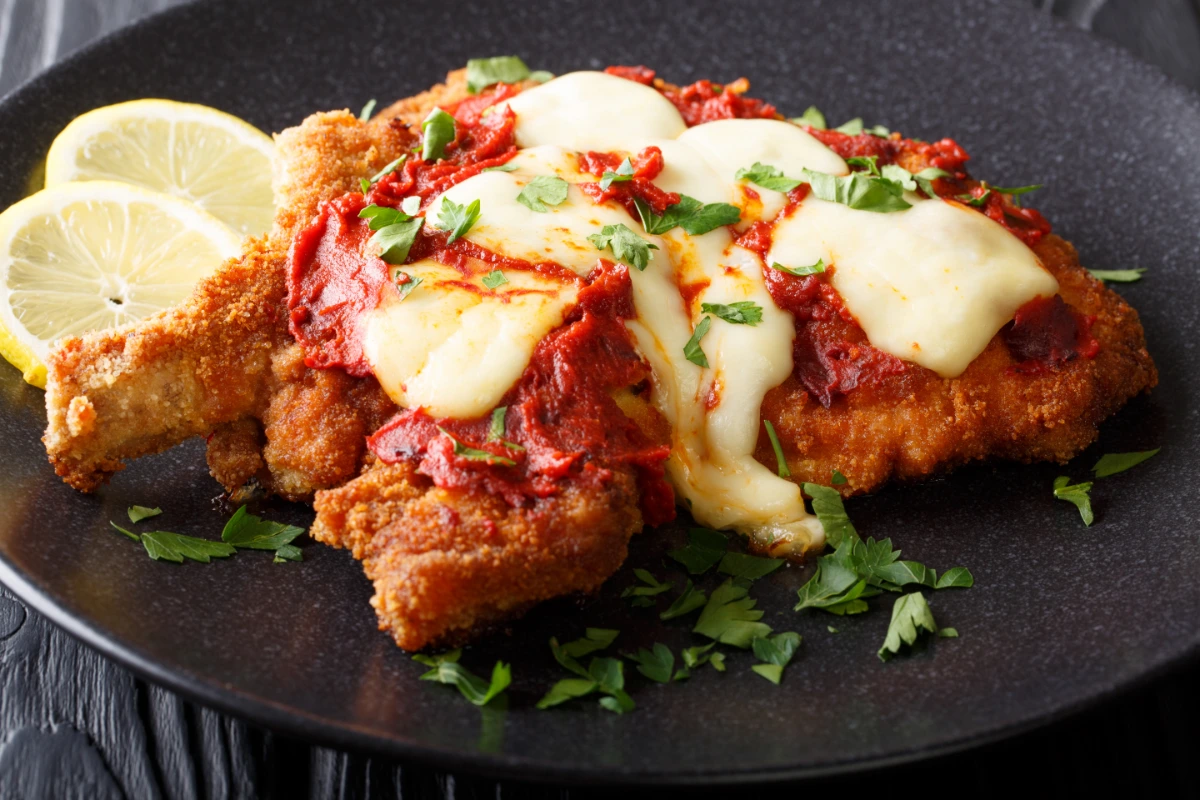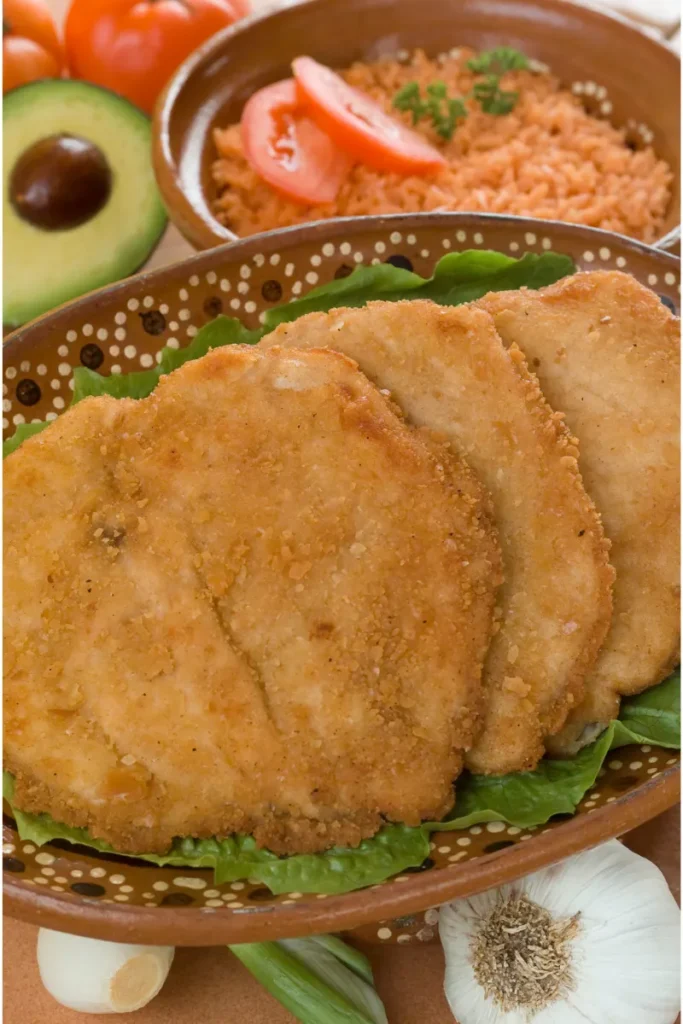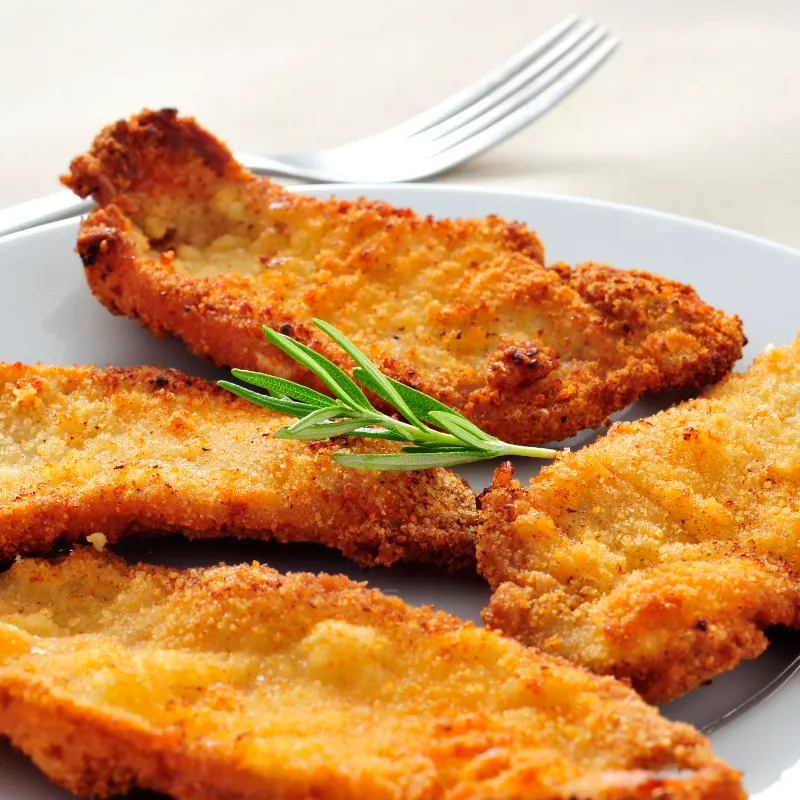Prepare to embark on a culinary adventure as we delve into the delectable world of milanesa steak. This beloved dish, a cornerstone of Latin American cuisine, promises a symphony of flavors and textures that will tantalize your taste buds. From its humble origins to its diverse regional variations, we’ll explore the secrets behind crafting the perfect milanesa steak, offering tips, tricks, and answers to your burning questions. So, grab your forks and knives, and let’s dig in!
Introduction to Milanesa Steak
What is Milanesa Steak?
The milanesa steak, a dish that transcends borders and cultures, is a true culinary masterpiece. Imagine a thin slice of meat, be it beef, chicken, or veal, lovingly pounded to tenderness. Then, it’s coated in a crispy breading and cooked to golden-brown perfection. While its roots trace back to Milan, Italy, the milanesa steak has truly found its home in the heart of Latin American cuisine. From bustling Argentine steakhouses to family kitchens across the continent, it reigns supreme as a comfort food classic, bringing joy to countless meals.
And here’s the beauty of milanesa steak: it’s a culinary chameleon, adapting to regional flavors and preferences. Whether it’s the classic Argentine version with a simple breadcrumb coating or the Uruguayan rendition featuring a symphony of spices, each country adds its unique twist to this beloved dish.
Cooking Milanesa Steak
Ingredients and Preparation
Ready to whip up your milanesa steak masterpiece? Let’s gather our culinary tools and ingredients. The essentials are simple: thin slices of your chosen meat (beef, chicken, or veal), eggs, breadcrumbs (or panko for extra crunch!), and a blend of your favorite seasonings. Garlic powder, oregano, paprika, and a touch of salt and pepper are classic choices but feel free to unleash your inner chef and experiment with different flavor profiles.
Now, onto the prep work! First, we’ll give our meat some TLC, pounding it gently with a mallet until it reaches an even thickness. This not only ensures even cooking but also creates a more tender texture. Next comes the breading process – a delightful dance of dipping the meat into beaten eggs and then coating it generously with seasoned breadcrumbs. Be sure to press the breadcrumbs firmly onto the meat, creating a snug layer that will transform into a crispy golden crust.
Cooking Methods
With our milanesa steak beautifully breaded and ready to go, it’s time to choose our cooking method. Pan-frying is a popular choice, offering a quick and convenient way to achieve that irresistible golden-brown exterior. Simply heat a generous amount of oil in a skillet and cook the milanesa steak for a few minutes on each side until cooked through and beautifully crisp.
For those who crave an extra dose of indulgence, deep-frying is the way to go. Submerge the milanesa steak in hot oil and watch it magically transform into a crispy, golden delight. Just remember to monitor the temperature carefully and avoid overcrowding the pot to ensure even cooking.
But wait, there’s more! For health-conscious cooks, baking or air-frying offer fantastic alternatives. These methods require little to no oil, resulting in a lighter yet still flavorful milanesa steak.
Serving Suggestions
The beauty of milanesa steak lies in its versatility. It pairs beautifully with a wide array of side dishes, allowing you to create a complete and satisfying meal. Fluffy mashed potatoes, a vibrant salad, or a bed of fragrant rice are all excellent choices.
And let’s not forget the toppings! A drizzle of chimichurri sauce, a dollop of creamy avocado salsa, or a sprinkle of fresh herbs can elevate your milanesa steak to new heights.
Feel like getting creative? Milanesa steak can be the star ingredient in sandwiches, wraps, or even salads. The possibilities are endless!
Variations and Regional Differences
Argentina
In the realm of milanesa steak, Argentina reigns supreme. This dish is not simply a meal; it’s a cultural icon, deeply woven into the fabric of Argentine life. From humble family gatherings to upscale restaurants, milanesa steak graces tables across the nation always met with enthusiasm and delight.
The classic Argentine milanesa is a testament to simplicity and flavor. Tenderized beef, coated in a blend of breadcrumbs and Parmesan cheese, is pan-fried to perfection, resulting in a crispy, golden crust that gives way to a juicy, flavorful interior.
But the Argentine culinary creativity doesn’t stop there. Milanesa Napolitana, topped with tomato sauce, ham, and melted mozzarella, offers a delightful twist. And for those seeking a heartier option, milanesa a caballo comes crowned with a fried egg, adding richness and a touch of indulgence.
Uruguay
Just across the Rio de la Plata, Uruguay boasts its unique take on the milanesa steak tradition. Here, you’ll find a wider variety of meats used, including chicken, pork, and even fish. The breading often incorporates a medley of spices like cumin and paprika, adding a warm depth of flavor.
Uruguayan milanesa is typically served with a generous helping of french fries, forming a classic and satisfying combo known as “milanesa con papas fritas.” A squeeze of fresh lemon juice adds a bright, zesty touch.
Other Latin American Countries
The love for milanesa steak extends far beyond Argentina and Uruguay. Across Latin America, each country adds its own flair and regional ingredients to this beloved dish. In Mexico, you might encounter milanesa served with spicy salsa or a dollop of guacamole. Chileans often enjoy it with pebre, a vibrant condiment made with cilantro, onions, and tomatoes. In Colombia, milanesa is sometimes prepared with a cornmeal crust, adding a delightful crunch and a touch of sweetness.
Tips and Tricks for the Perfect Milanesa
Choosing the Right Cut of Meat
The foundation of a delectable milanesa steak lies in selecting the perfect cut of meat. For beef, opt for top round, eye of round, or cube steak – these cuts offer a good balance of flavor and affordability. Chicken breast or thighs, boneless and skinless, are excellent choices for a lighter option. And for those seeking ultimate tenderness, veal cutlets are the way to go. Remember, the thickness of the meat matters too! Aim for slices that are about 1/4 to 1/2 inch thick to ensure even cooking and a juicy interior.
When selecting your meat, look for fresh cuts, with a vibrant color and minimal marbling. And don’t hesitate to ask your butcher for recommendations – they’re a treasure trove of knowledge!
Pounding and Breading Techniques for a perfect Milanesa Steak
Tenderizing the meat is essential for achieving the perfect milanesa. To do this, sandwich the meat slices between two sheets of plastic wrap (to minimize mess) and gently pound them with a mallet until they are uniformly thick. This process not only makes the meat more tender but also ensures that the breading sticks better.
Now, let’s talk breading! The classic method involves a three-step process: flour, egg wash, and breadcrumbs. Season the flour with salt, pepper, and your favorite spices. Dip the pounded meat into the seasoned flour, ensuring it’s evenly coated. Next, dip it into a mixture of beaten eggs, allowing any excess to drip off. Finally, coat the meat generously with breadcrumbs, pressing firmly to create a snug layer. Panko breadcrumbs are a fantastic option for extra crunch!
Cooking to Perfection
Whether you choose to pan-fry, deep-fry, bake, or air-fry your milanesa steak, achieving the perfect cook requires attention to detail. For pan-frying and deep-frying, maintain a consistent oil temperature to ensure even browning and prevent burning. The milanesa should sizzle gently when it hits the oil. Cook for a few minutes per side or until golden brown and cooked through. A meat thermometer can be your best friend here, ensuring the internal temperature reaches a safe level.
For baking and air-frying, preheating is key! This ensures the milanesa starts cooking immediately, promoting even browning. Keep a close eye on the cooking process, as ovens and air fryers can vary in temperature and cooking time.
And there you have it – tips and tricks to help you master the art of milanesa steak! With a little practice and these helpful hints, you’ll be creating culinary masterpieces in no time.
FAQs about Milanesa Steak
What cut of meat is milanesa?
Milanesa can be made from various cuts of meat, but the most common choices are:
- Beef: Top round, eye of round, or cube steak are popular options for their relatively thin profile and affordability.
- Chicken: Boneless, skinless chicken breasts or thighs work well for milanesa.
- Veal: Thinly sliced veal cutlets are a classic choice for a more tender and delicate milanesa.
Is milanesa steak tender to eat?
The tenderness of milanesa steak depends on two main factors: the cut of meat used and the preparation method. Pounding the meat with a mallet before breading and cooking helps to break down the muscle fibers, resulting in a more tender texture. Additionally, choosing naturally tender cuts like veal or chicken breast will further enhance the tenderness of the final dish.
Is milanesa the same as flank steak?
No, milanesa and flank steak are not the same. Flank steak is a specific cut of beef known for its robust flavor and chewy texture. While flank steak can be used for milanesa, it requires careful preparation, including marinating and slicing against the grain, to ensure tenderness.
Is milanesa good for grilling?
Milanesa is not typically grilled. The breading used for milanesa is prone to burning over the high heat of a grill. Pan-frying, deep-frying, baking, or air-frying are the preferred cooking methods for achieving a crispy crust and juicy interior.
What is the origin of the name “Milanesa”?
The name “milanesa” might seem like a curious choice for a dish so deeply rooted in Latin American cuisine. However, its origins do indeed trace back to Milan, Italy. In the mid-19th century, Italian immigrants brought their culinary traditions to South America, including the practice of breading and frying thin cuts of meat. This technique, known as “cotoletta alla Milanese” in Italy, evolved and adapted to local ingredients and preferences, eventually becoming the milanesa steak we know and love today.
Is Milanesa the same as schnitzel?
While milanesa steak and schnitzel share a common ancestry in the breaded and fried cutlet family, they have distinct personalities. Schnitzel, hailing from Austria and Germany, typically features veal or pork and is traditionally served with lemon wedges and a simple potato salad. Milanesa steak, on the other hand, embraces a wider range of meats and is often accompanied by vibrant sauces and side dishes that reflect the diverse flavors of Latin America.
Can I make Milanesa ahead of time?
Absolutely! Milanesa steak is a meal-prep champion. You can easily bread the meat a day or two in advance and store it in the refrigerator until you’re ready to cook. This is a fantastic time-saver, especially on busy weeknights. Just remember to bring the breaded meat to room temperature before cooking to ensure even cooking.
The Cultural Significance of Milanesa Steak
A Culinary Symbol of Home and Heritage
Milanesa steak is more than just a delicious dish; it’s a powerful symbol of home, family, and cultural heritage. Passed down through generations, recipes and techniques for preparing milanesa often carry sentimental value, evoking memories of childhood meals and family gatherings. The act of sharing a plate of milanesa with loved ones creates a sense of connection and belonging, strengthening bonds and fostering a shared cultural identity.
A Culinary Canvas for Creativity
While milanesa steak boasts a rich history and tradition, it also embraces innovation and creativity. Chefs and home cooks alike continually experiment with new flavors and ingredients, pushing the boundaries of this classic dish. From gourmet versions featuring exotic spices to fusion creations that blend culinary influences, milanesa steak serves as a versatile canvas for culinary expression.
A Culinary Ambassador for Latin America
As milanesa steak gains popularity worldwide, it acts as a delicious ambassador for Latin American cuisine. Introducing people to the diverse flavors and culinary traditions of the region, milanesa steak sparks curiosity and appreciation for Latin American culture. It’s a testament to the power of food to connect people and bridge cultural divides.
Conclusion: A Culinary Journey Worth Taking
From its humble beginnings to its status as a culinary icon, milanesa steak has captured the hearts (and stomachs) of countless people around the world. Its simplicity, versatility, and undeniable deliciousness make it a dish that transcends borders and cultures.
Whether you’re a seasoned chef or a kitchen novice, I encourage you to embark on your milanesa steak adventure. Explore the different variations, experiment with flavors, and discover the joy of creating a dish that is both comforting and exciting. As you savor each bite, remember that you’re not just enjoying a meal; you’re experiencing a taste of history, culture, and culinary artistry. So, go forth, and may your milanesa steak journeys be filled with flavor and delight!
More Delicious Recipes:
- Old Fashioned Baked Macaroni and Cheese: Indulge in our Old Fashioned Baked Macaroni and Cheese, a classic comfort dish with creamy, cheesy goodness. Perfect for cozy meals.
- Bisquick Chicken Pot Pie: Savor the simplicity and heartiness of our Bisquick Chicken Pot Pie, combining tender chicken and vegetables with a flaky crust. Ideal for a delicious, fuss-free dinner.



